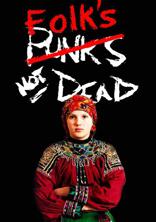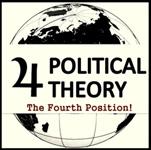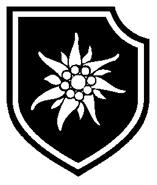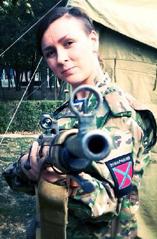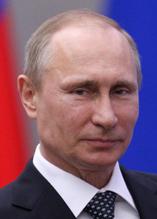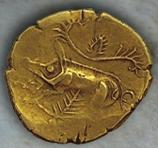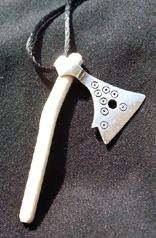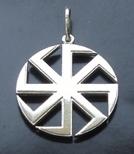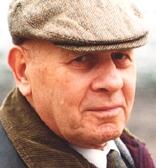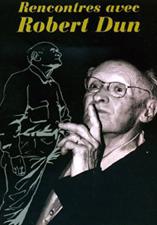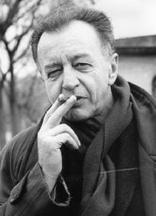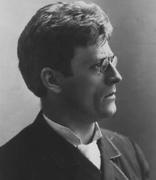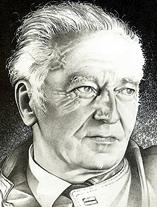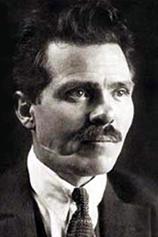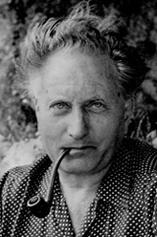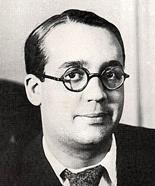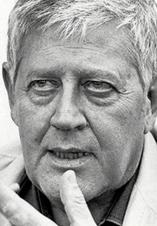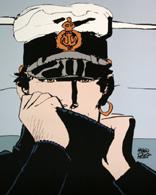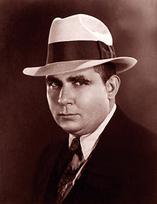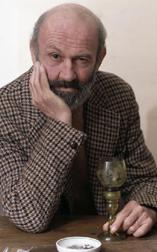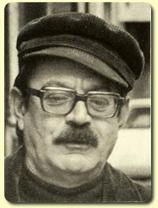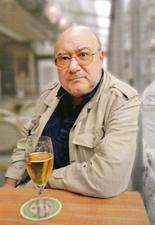11/09/2014
St. Andrew’s Flag Flown over Scotland and Donetsk
St. Andrew’s Flag
Flown over Scotland and Donetsk
That’s the way the history goes. The St. Andrew’s flag is flown in two places in Europe situated at great distance from each other. Scotland and Novorossia are struggling for their national identity under the same colors. The two peoples divided by different history and cultures are addressing the issue of independence. They are going different ways; a peaceful referendum is to take place in Scotland while Novorossia is going through the horrors of civil war. But they are united by the same goal and its symbol – the St. Andrew flag.
The New Testament states that Andrew the Apostle was born in the village of Bethsaida on the Sea of Galilee. He was a fisherman by trade to become the first disciple to follow Jesus. The church history says Andrew preached in Scythia, along the Black Sea, including Crimea and the Dnieper River as far as Kiev and from there he traveled to Novgorod. Hence, he became a patron saint of Ukraine, Romania and Russia. According to tradition, he founded the See of Byzantium (Constantinople) in AD 38. Since then Andrew was recognized as Russia’s patron saint. Andrew is said to have been martyred by crucifixion at the city of Patras (Patræ) in Achaea, on the northern coast of the Peloponnese.
…The St. Andrew flag was the ensign of the Navy of the Russian Empire from 1712 to 1918. It was first hoisted in 1712 to be formally adopted as Navy Ensign in 1720. From 1692 to 1712 Peter I personally drew eight flags projects that have consistently been taken into the Navy. Here is the description of the flag's final version by Peter I: «The flag is white, across it there is a blue St. Andrew’s cross, whom he baptized Russia». After the Russian Revolution, the Russian Navy Ensign was changed to be reintroduced in the Russian Navy in 1992, and is still used today. Novorossia made St. Andrew its flag in May 2014 adding some red field to it. It emphasized the important role of the Navy in adding these lands to Russia and the association with the Great Victory Banner. It also symbolizes the unity of Russian people. The current flag of the Federal State of Novorossia was adopted on August 13, 2014. It resembles the Romanov flag, the national flag of the Russian Empire from 1858 to 1883. Formally the St. Andrew flag now is a symbol of Novorossia’s self-defence forces. But the changes have not taken root. The people of Novorossia, civilians and fighters, maintain their allegiance to the St. Andrew’s flag.
First the Saint Andrew's Cross or the Saltire, the flag of Scotland, also known as the national flag of the country. But then it was the white cross on a blue field. According to legend, Saint Andrew, the patron saint of Scotland, was crucified on an X-shaped cross at Patras (Patrae), in Achaea. According to legend, in 832 A.D. Óengus II led an army of Picts and Scots into battle against the Angles, led by Athelstan, near modern-day Athelstaneford, East Lothian. The legend states that whilst engaged in prayer on the eve of battle, Óengus vowed that if granted victory he would appoint Saint Andrew as the Patron Saint of Scotland; Andrew then appeared to Óengus that night in a dream and assured him of victory. On the morning of battle white clouds forming the shape of an X were said to have appeared in the sky. Óengus and his combined force, emboldened by this apparent divine intervention, took to the field and despite being inferior in terms of numbers were victorious. Having interpreted the cloud phenomenon as representing the crux decussata upon which Saint Andrew was crucified, Óengus honoured his pre-battle pledge and duly appointed Saint Andrew as the Patron Saint of Scotland. The white saltire set against a celestial blue background is said to have been adopted as the design of the flag of Scotland on the basis of this legend. The St. Andrew’s flag has been a symbol of opposing the aggressive Anglo-Saxon civilization in the lands stretching from the North Sea shore to the Black Sea region.
By signing the Acts of Union in 1707 Scotland ultimately lost its independence but preserved its soul. On September 18 an independence referendum is held and people may say «Yes». London makes a lot of promises to cozy up to Scottish voters. It goes to any length just to make them remain part of the United Kingdom. But even if the majority says ‘No» at the referendum, the time is on the side of those who advocate Scotland’s independence.
Saying «Yes» by the voters will inspire the people of Donetsk and Lugansk. They will welcome the outcome and ask - why should we be refused the rights that other peoples have, are we different, do our children cry in some other way?
When London agreed to the referendum, the idea of independence was supported by no more than 30%. The changes in public sentiments were neither expected, nor predicted. If it were different, perhaps the English would have done their best to prevent the event. What made influence the public opinion in such a short period of time? Has the drama of other European people making sacrifices for the ideas symbolized by the St. Andrew’s flag impacted their mindset? The link between the events in Scotland and Novorossia is only symbolic. Backed up by powerful Washington London is directly involved in activities aimed at quelling the expression of people’s free will in Novorossia. By doing so it kind of lets the Scots know that, if not the circumstances, they could be treated the same way. It only spurs the pro-independence feelings. Actually there is no difference between the happenings in Scotland and Novorossia from a legal point of view.
In fact, the only formal argument against the self-determination of Novorossia is that the referendum is held in agreement with London while the referendum in Novorossia took place without Kiev’s consent. The Spanish diplomacy tries to take advantage of this fact as the referendum on Catalonia’s independence is slated for November 9. The Spanish government never gave its agreement on organizing the event and never said it would recognize its results. In Madrid they say the Catalonian vote should be treated the same way as the plebiscites in Crimea and Novorossia with no recognition of referendum results to follow. But if Scotland votes for independence nothing will stop the Catalonians on the way to self-determination. The stubbornness of Madrid may lead to the repetition of the events in Ukraine. The attempt to substitute the rights of people with the rights of governments challenges the international law and may lead to new conflicts.
The energy of the collapse that hit the USSR and East Europe in the late 1980s – early 1990 was, to large extent, stimulated by London to backlash today. The West started to talk about the boomerang effect of re-Balkanization. Scotland is just a start. Wales and Northern Ireland may follow. It’s an irony of fate that Donetsk was founded by John James Hughes, a Welsh engineer and businessman. This is one more historic event linking Donetsk with Great Britain and its people.
The chain reaction is to move far beyond the UK’s borders. In Europe the leaders of political movements struggling for autonomy status or independence are closely watching the event. Perhaps Catalonia in Spain and Flandria in Belgium are next. The support of Western capitals for the Kiev repressions does not scare them; to the contrary it makes them more adamant on achieving the aspired goal. The logic is simple: the national issue should be tackled before they are treated the same way as in Ukraine.
The European Union will not avoid the crisis of identity. George Robertson, former NATO Secretary General (1999-2003, who is a Scot by origin, said, «A dangerous historic event might soon be upon us — with few people outside the U.K. even noticing». According to him, if the separatist government gets its way in a referendum planned for September 18, the 300-year-old union of Scotland, England, Wales and Northern Ireland — the United States’ oldest and closest ally — will be on the road to disintegration. The rest of the country will hold a referendum on the European Union membership. There is a great chance the advocates of leaving the Union will win as Scotland is largely pro-EU. The Eurosceptics will strengthen their position in all countries. The window of opportunity for the states striving for the European Union membership to save their feeble economies will probably be closed. And the Ukraine’s prospects for European integration, which are dim enough anyway, will vanish in the hays.
Dmitry MININ / 11.09.2014
Source : http://www.strategic-culture.org/news/2014/09/11/st-andrew-flag-flown-over-scotland-and-donetsk.html
http://www.strategic-culture.org/
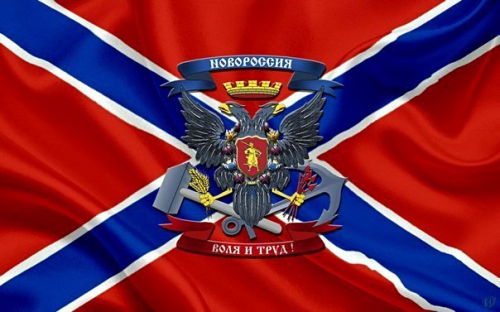
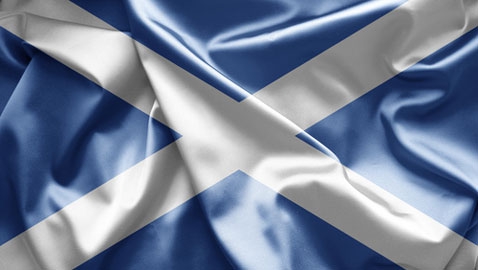
12:29 Publié dans Blog, Highlands, Histoire européenne, Kelts, Politique / économie, Symbolisme, Ukraine / Novorossiya | Lien permanent | Commentaires (0) | Tags : novorossia, novorossiya, scotland, écosse, alba, saint andrew's cross, saltire, the st. andrew flag, nato, europe, donetsk and lugansk, catalonia, independance, self-determination, referendum, histoire européenne, histoire en marche


